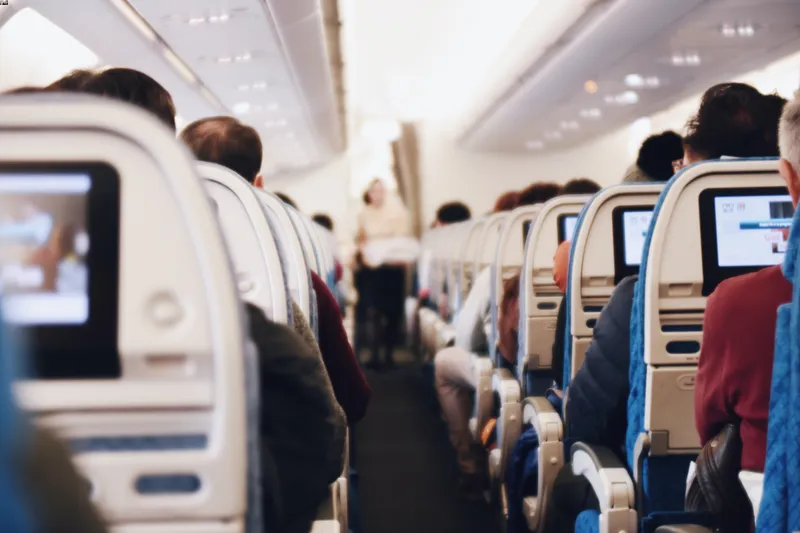Did you know that the commercial aviation industry experienced a total of 30 accidents in 2023? Just in 2024, there are 6 plane crashes being reported. Turbulence has been a major issue in 2024, with serious injuries being caused on a large commercial airliner since 1997.
These incidents have left some travelers wondering about the safety of U.S. airlines or flying in general. In March 2024, Secretary of Transportation Pete Buttigieg said data shows flight safety has gotten better, and flying in the U.S. is the safest way to travel.
But can you really sue an airline for an aviation accident? When such tragedies occur, it is natural for those affected to seek justice and compensation for their losses. According to aviation accident lawyer Robert Spohrer, knowing what damages you can seek and how long you have to bring your lawsuit are crucial to winning.
Let’s determine why consulting an experienced aviation accident lawyer is essential for understanding your rights and securing compensation.
Legal Grounds for Aviation Accident Lawsuits
You must grasp litigation grounds if you or a loved one was in an airline disaster. Suing an airline for an aircraft accident requires multiple legal bases. The most typical cause of such claims is negligence. The airline or its workers breached their duty of care, causing the accident and injuries.
If the accident was caused by an aircraft or component flaw, you may sue the manufacturer or maintenance provider. Westminster personal injury lawyer Kevin Cheney says that the airline may be sued for intentional misbehavior or fraud but you must prove if the airline willfully caused the accident.
If you want to take legal action after an aviation accident, it’s important to know these legal reasons. Talking to an experienced aviation accident lawyer can help you deal with these legal problems and figure out what the best course of action is.
Airline Liability in Aviation Accidents
Understanding airline liability in aviation accidents is essential for accountability and legal action. Airline liability for aircraft accidents can include pilot mistakes, mechanical breakdowns, and poor maintenance. Airlines are liable for accidents caused by negligence in protecting passengers and personnel.
If airlines are found liable, victims or their families may receive compensation for medical bills, lost wages, pain and suffering, and wrongful death. Although airlines carry insurance for such claims, the legal process to seek compensation can be difficult.
Types of Damages You Can Seek
When seeking compensation for an aviation accident, you can pursue various types of damages to cover expenses and losses. The primary types of damages that you can seek in such cases include economic damages and non-economic damages.
Economic damages compensate for financial losses directly related to the accident, such as medical expenses, lost wages, property damage, and rehabilitation costs. These damages are quantifiable and can be supported by documentation like bills, receipts, and pay stubs.
Non-economic damages are subjective and cover losses that can’t be quantified. This comprises pain and suffering, mental distress, consortium loss, and life enjoyment compensation. Non-economic damages are harder to assess but are crucial to acknowledging the emotional and psychological toll of aviation accidents on victims and their families.
Statute of Limitations for Lawsuits
The statute of limitations for lawsuits involving aviation accidents typically varies based on the jurisdiction where the incident occurred. These time limits set by law determine the window within which you can file a lawsuit against an airline for an aviation accident. Understand these limitations to make sure you take timely legal action if needed.
In the United States, the statute of limitations for aviation accident lawsuits can range from two to three years, but this can vary depending on the specifics of the case and the laws of the state where the accident happened. Consult with a legal professional to determine the exact time frame you have to file a lawsuit.
The statute of limitations can differ significantly from country to country. Some jurisdictions may have shorter or longer time limits than what’s common in the U.S.
Steps to Take When Filing Suit
Consult a lawyer to help you file a suit following an aviation disaster. Gather all medical records, flight details, and airline communications connected to the incident. Keep detailed records to support your argument.
Notify the airline of your intent to file a lawsuit. This formal notification may cause the airline to engage in settlement negotiations. If these negotiations fail, your legal representative will file a complaint in court, initiating the lawsuit. The airline will then have the opportunity to respond to the allegations.
Throughout this process, your attorney will handle evidence gathering, legal arguments, and negotiations. Be prepared for the possibility of a trial if a settlement can’t be reached.
Conclusion
If you have been involved in an aviation accident, you may have grounds to sue the airline for damages. Taking the necessary steps to file a suit can help you seek justice and compensation for the harm you have suffered.






